More women are watching sports than ever before, so why are they still being treated as second-class when it comes to merchandising?
On January 13, Taylor Swift wore a red and white puffer jacket to the Kansas City Chiefs vs. Miami Dolphins game.
Designed by Kristin Juszczyk, wife of San Francisco 49ers fullback Kyle Juszczyk, the jacket, which featured the jersey number of Swift’s beau, Kansas City Chief linebacker Travis Kelce, made fashion history.
Not simply because of the unique design, but because of the conversations it sparked surrounding women’s merchandising in major league sports.
This social media-famous jacket is unlike anything female NFL fans have seen before. Not only is the jacket practical, but it’s cool, and something fans actually want to wear. It’s a jacket that can be worn to keep warm, but could also add a bit of flair to any outfit.
The last jacket to cause such a frenzy in the sports merchandising world was the iconic green Philadelphia Eagles varsity jacket worn by Princess Diana in 1991.
| Embed from Getty Images |
After Swift wore Juszczyk’s design to the game, the designer blew up overnight. She gained over 500,000 Instagram followers in the span of one week, a following that now totals over 1.1 million, and has since been granted a licensing deal with the NFL.
Not only did conversations around Juszczyk’s designs blow up on social media, but so did conversations around the lack of “cool” merchandise for women in major league sports.
Women’s merchandising may not seem like the biggest issue facing professional sports, but it’s being talked about now more than ever thanks to the rise of female viewership of major league sports.
Ever since Swift began dating Kelce, female viewership of the NFL has skyrocketed. For example, this past Super Bowl, the Kansas City Chiefs vs. San Francisco 49ers, drew 58.8 million female watchers, making up 47.5% of the audience, the biggest female audience in the history of the championship game.
This rise in female viewership of male sports doesn’t just apply to the United States. A study conducted by Global Sports Survey in 2021 found that nearly 50% of women in the US, UK, and Germany are monthly sport viewers. The Premier League, by far the largest major male sport league in England, drew a little over 30% of female viewers in 2021.
With this increase of female viewers, you may think that major league sports would be marketing towards women by offering a wider range of apparel options, right?
Unfortunately, you would be wrong. Juszczyk’s creative, now officially NFL-licensed designs, are the exception to women’s merchandising in major league sports.
Although sales of women’s apparel in the NFL have tripled in the past decade, walking into most sports stores, you’ll be greeted by hundreds of options for men, with a tiny women’s section sequestered somewhere in the back.
The women’s section of most major league sports proves one thing: men really have no idea what women want.
Setting the scene
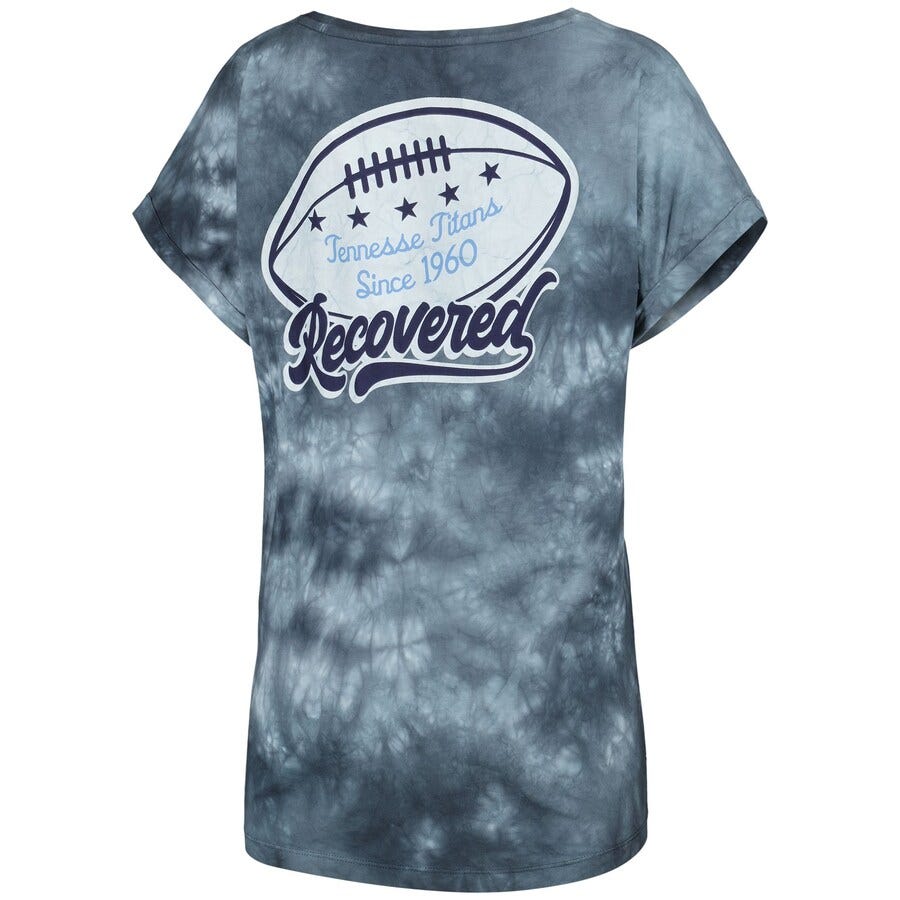
For those unfamiliar with the women’s merchandise offerings in most major league sports, let me set the scene.
As a long-time sports fan, I can attest that, as with most women’s clothing, the apparel isn’t necessarily built for practicality.
The T-shirts are too thin, the pants have no pockets and the jackets don’t provide the warmth you would want when watching a sport in an outdoor stadium.
While these products appeal to some, users on TikTok and other social media platforms are making it known that they want more.
One TikTok that went viral, posted by @fanbehaviorf1pod, features a female speaker ranting about the lack of good merchandising available to women by major league sports.
The speaker starts off her video saying “PSA to all major sports leagues: Your female fans are here to stay and they want better merchandise.”
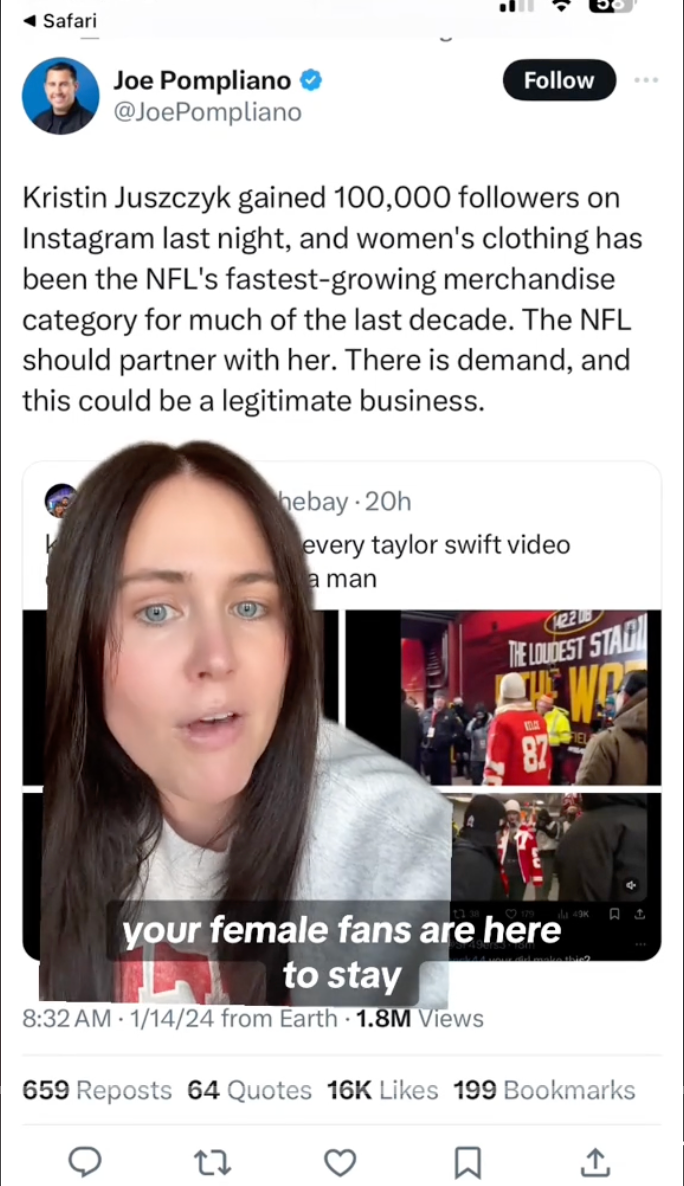
On a green screen behind her is a tweet by reporter Joe Pompliano that cites women’s merchandise as one of the fastest-growing merchandise categories for the NFL over the last decade.
The speaker ends her video by saying “I don’t know why it’s surprising to people when they find out women actually like sports and they want merchandise that’s cool and fun … Let this be a PSA to all major league sports: make products for women and women will buy said products.”
However, this issue doesn’t exclusively apply to the NFL or American sports. It seems to be a global dilemma.
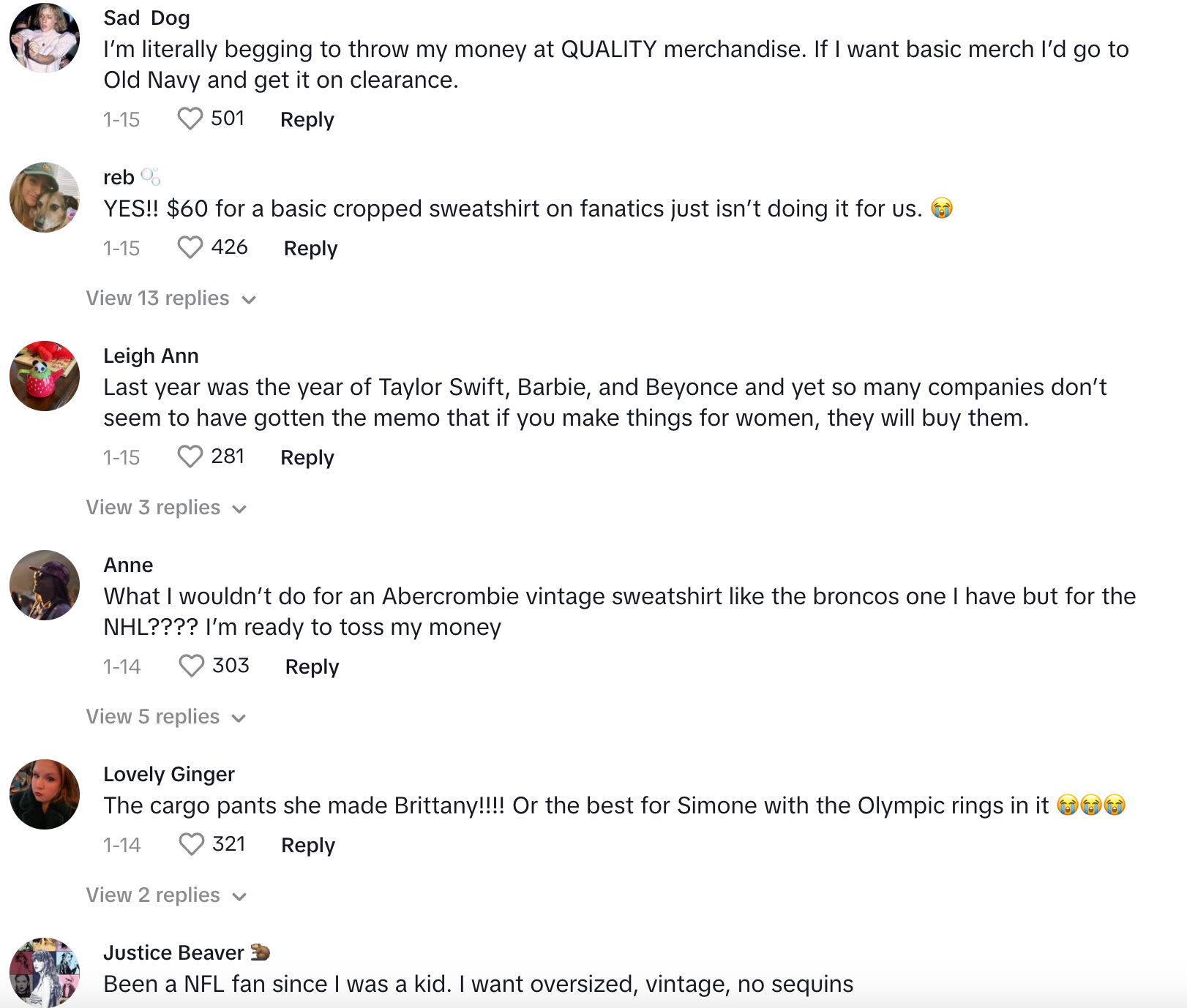
After moving to London a few months ago, I officially declared West Ham as the soccer (a.k.a. football) team I support. I bought tickets to several matches and anticipated not just the game, but also the merchandise I hoped to get at the stadium.
My excitement at buying my first item of West Ham apparel truthfully overpowered my excitement for the match, that was until I arrived at the London Stadium store just to find the most pathetic women’s section I’ve ever seen.
The section included two different options for t-shirts: one pink V-neck with “I’m forever blowing bubbles” in glitter bubble font and another crimson-coloured women’s sweatshirt with West Ham written in huge font centred in the middle of the shirt.
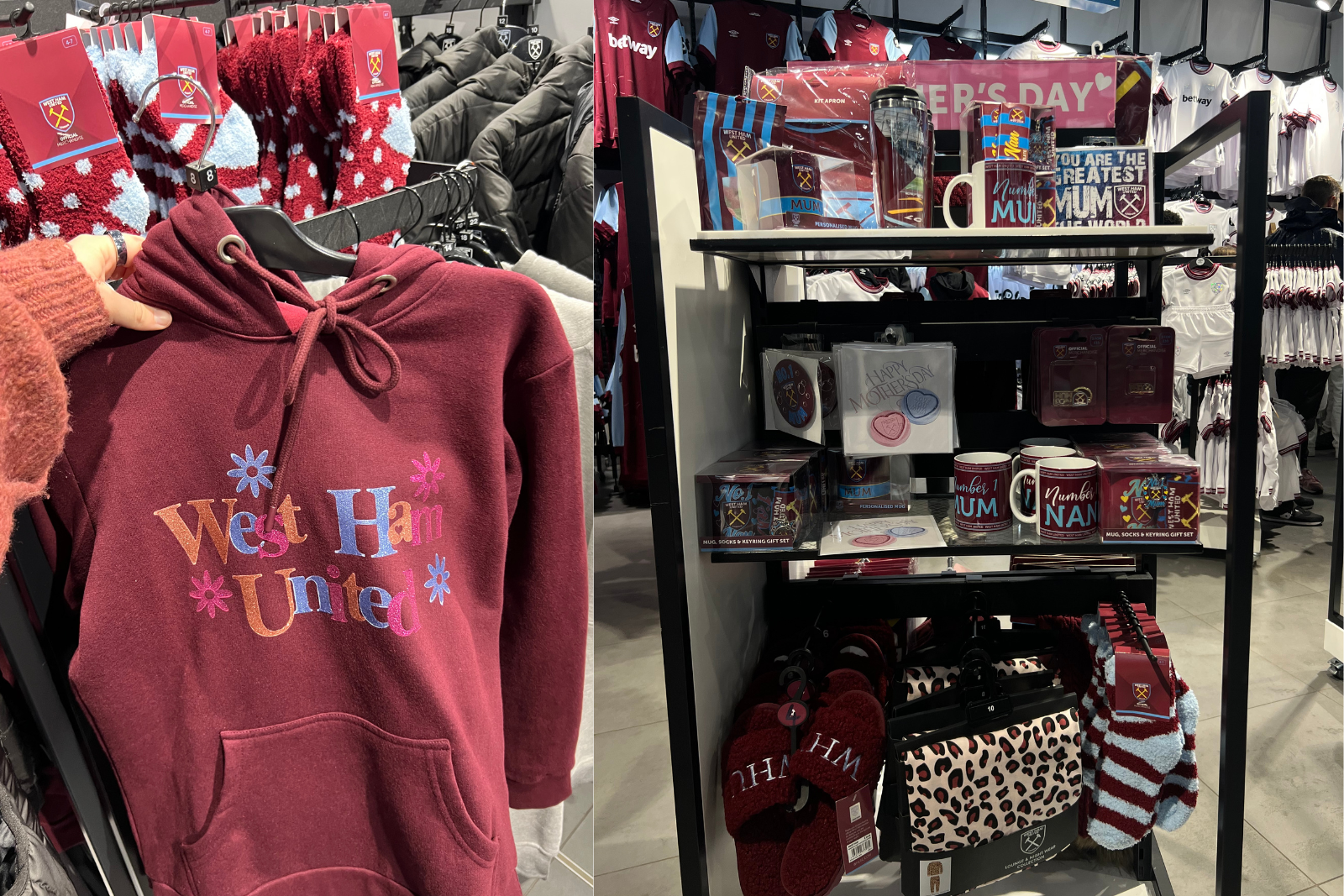
Since attending more matches, I learned I’m not the only person who feels this way. Passing by the West Ham Mother’s Day section, I overheard a couple laughing at the small section.
The woman, who was there with her husband and three kids, said “This is the Mother’s Day section, oh it’s so ridiculous.” Her husband replied, “I’m surprised they made an effort at all.”
Looking at this section, I was stunned. I immediately texted my friend who convinced me to support West Ham and complained to him about how offensively bad the women’s options were.
After overhearing this exchange, I asked her what she thought of the pitiful selection of items. She pointed to a set of cheetah print pajamas and the pink t-shirt that read Number 1 Mum, then said, “Do they really expect a grown woman to wear something like this?”
Defining cute and cool merchandise
As conversations of women’s apparel continued, I took it upon myself to survey fellow female sports fans as to how they feel about the merchandise currently being sold to them. It’s obvious that women want cooler merchandise, but what exactly does that mean?
The survey asked about respondents’ favourite teams, the merchandise sold by those teams and what they think the teams could be doing better. After posting the survey on Instagram, LinkedIn and Reddit, as well as sending it to female friends and family who are all fellow sports fans, I received 40 responses from women all over the world.
40 responses, in the grand scheme of things, is a very small sample size, but almost all of the answers conveyed the same feeling: they are disappointed with the merchandise sold to them by major league sports.
The most eye-opening answers came in response to the question, “What do you think major league sports could do better when designing women’s merchandise?”
One respondent had a lot to say:
“Here are the major issues I see: The amount of badly cut V-necks or poorly placed logos/text make it clear to me that..boobs and curves have not been considered in the design process.
“Please, no more separate branding for women’s merchandise. Lots of teams will overly feminize their logos or branding for women’s merchandise and I find it to be misogynistic and uninspired.
“How about some plus-size merch? I see men’s sizing going up to 4x or 5x on many items but if I want an actual plus size cut women’s shirt I am often SOL.”
Most other replies echoed similar sentiments. Another respondent suggested:
“Lean into trends and collaborations, like the Knicks and New York or Nowhere collab, and the Kith and Knicks collab, to make it look more high fashion/ Princess Diana chic in a subtle way rather than something I can only wear in that setting.”
The overall consensus: get rid of V-necks and women’s cuts, make clothing size inclusive and collaborate with trending brands to make more on-trend merchandise.
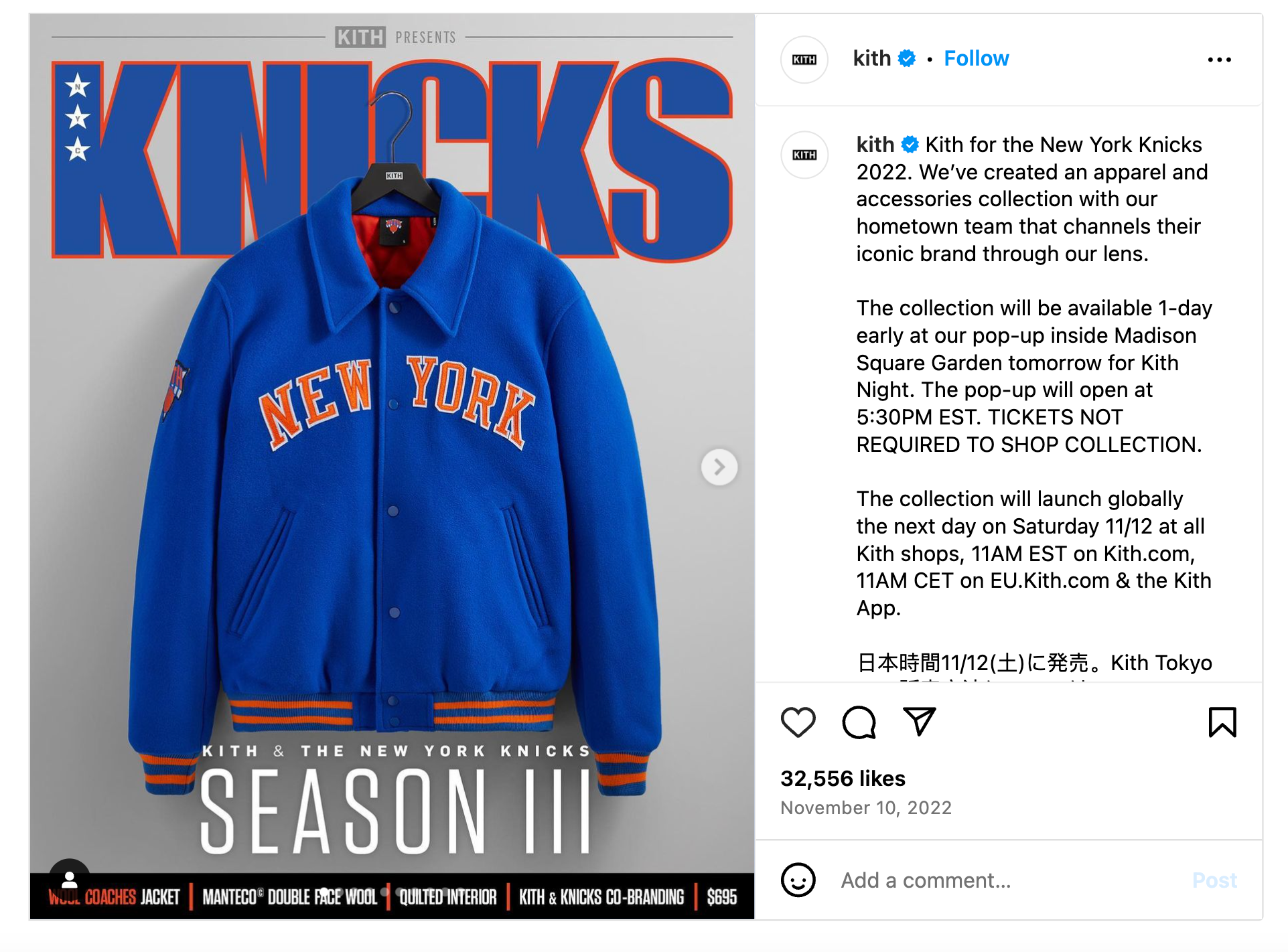
So, why haven’t major league sports gotten the message?
The biggest issue facing the Premier League, NFL, NBA, MLB and other major league sports lies with their licensing deals. When a major league club, such as one in the NFL, enters into a licensing deal with another company, it is giving the other company the ability to use its intellectual property in exchange for a fee.
The licensee can then use the company’s brand name or trademark when making merchandise. Many leagues limit the amount of licensing deals it gives to different companies, restricting the amount of companies legally allowed to sell official merchandise.
A licensing deal, however, does not mean that the licensee has exclusive use of the trademark. Exclusive use is only granted when a league signs an exclusivity deal with a company, granting them sole usage of certain trademarks.
While each individual club of the Premier League has control over their licensing and apparel, most American sports work differently. The league as a whole has total control over licensing rights, making it more complicated for smaller designers to have their apparel sold.
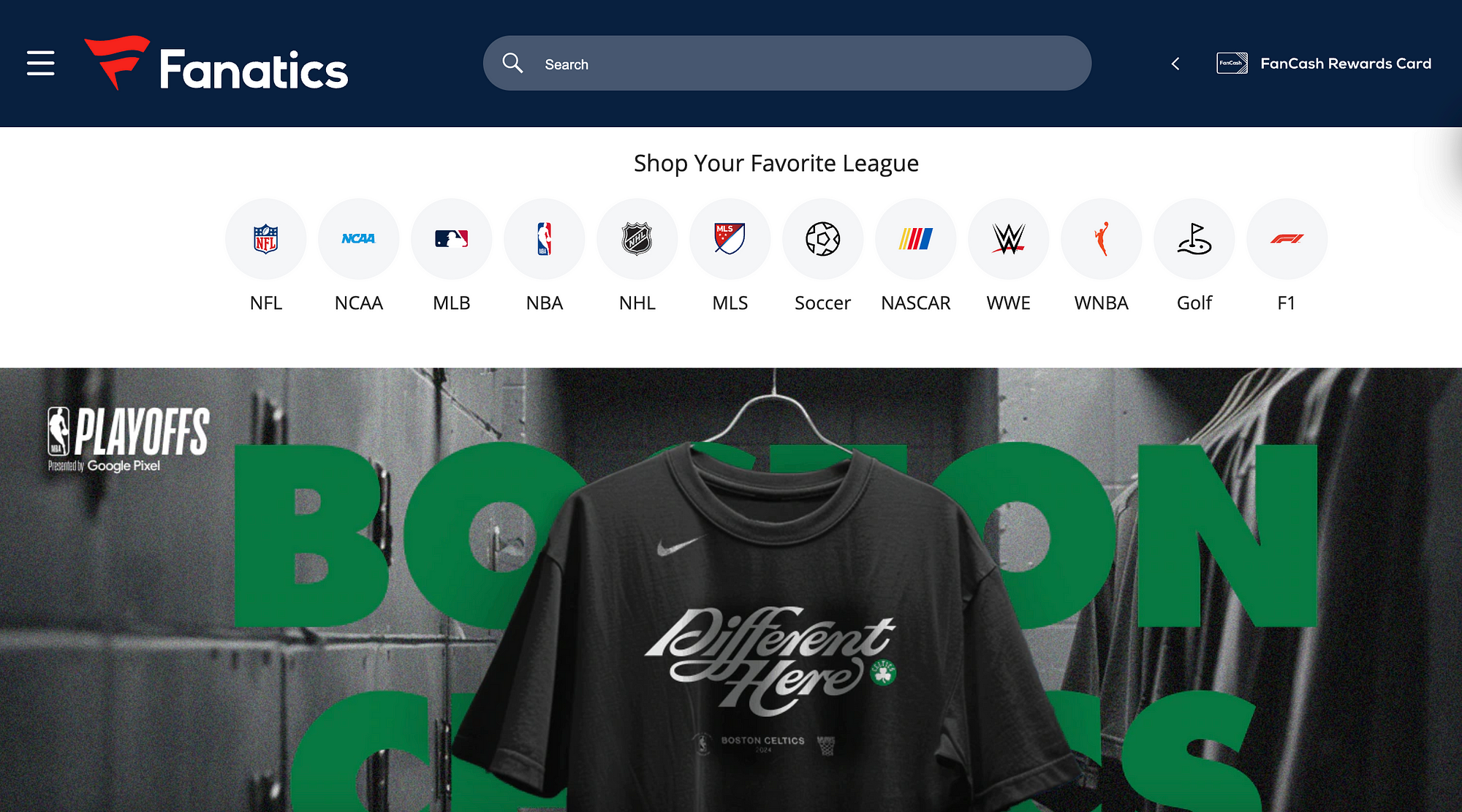
Fanatics, a sports apparel and online retailing company founded in 1995, currently holds licensing rights, along with several exclusivity deals, with the MLS, MLB, NFL, NBA, NHL and NASCAR; not to mention most of college athletics.
When I reached out to ask about licensing deals, no representative from any organisation gave a comment.
Kiya Tomlin, a fashion designer known for her bold, one-of-a-kind NFL apparel, and wife of Pittsburgh Steelers coach Mike Tomlin, told me “[The lack of cool women’s merchandise] is a deeper issue than the league ‘not hearing what women want’… The direction you should be looking into may be how the exclusivity rights that the large corporations have with the league affect what is offered for women.”
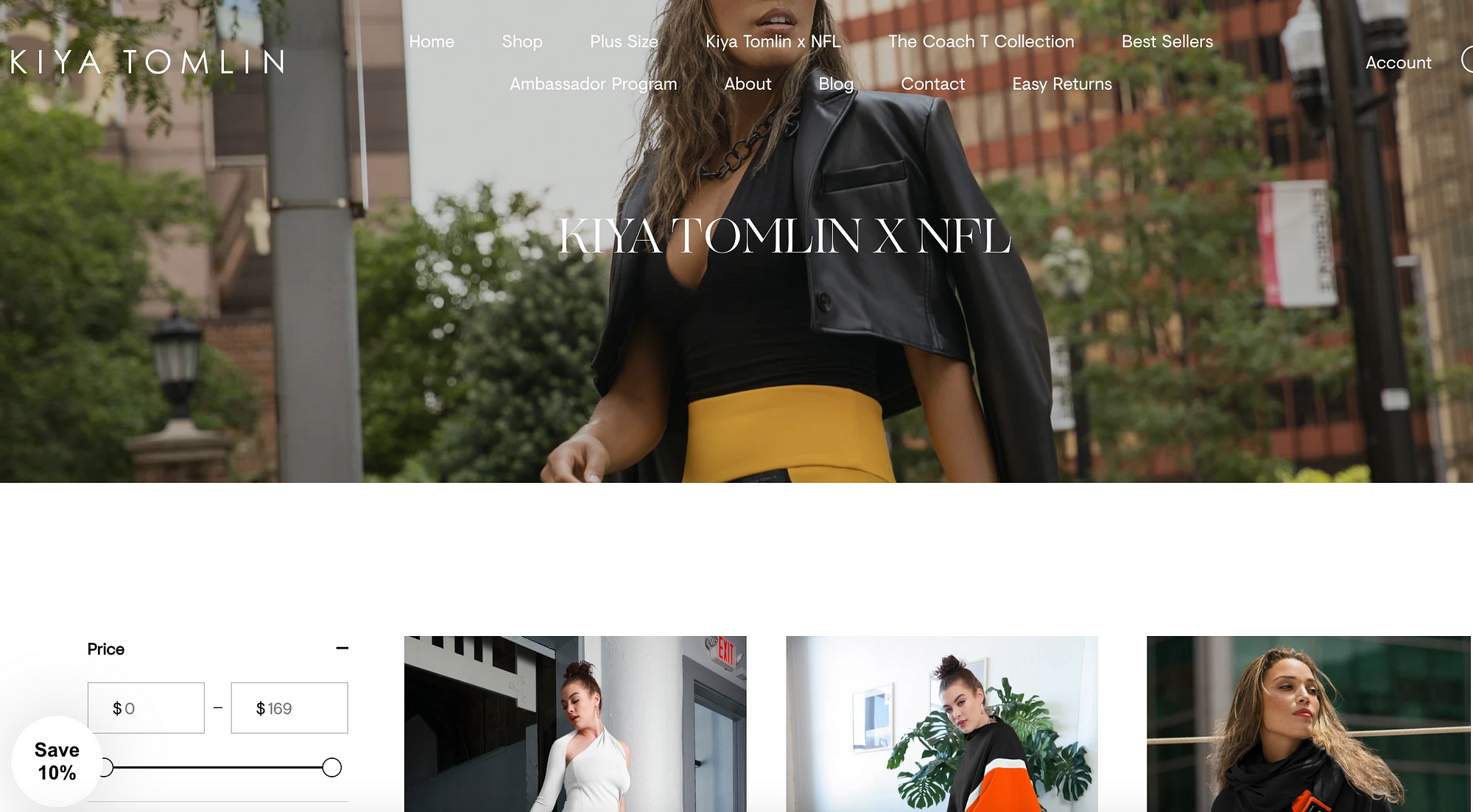
“If you understand the costs associated with designing and producing something unique and high quality, you will see why exclusivity rights could be the route of the problem,” said Tomlin.
In 2023, Fanatics got a valuation of $31 billion (£24.85 bn) thanks to its seemingly never-ending licensing and exclusivity deals. The company signed a deal with the NBA in 2024 making it the exclusive licensee of NBA cards, they recently signed a 20-year licensing deal with the NFL Players Association beginning in 2026.
It’s obvious why major league sports are caught up in the Fanatics frenzy: it makes products cheap, fast and effectively. Why invest in smaller, more expensive creators when leagues can get cheap merchandise faster from Fanatics? The NFL now leads as an investor of the apparel company after investing over $320 million (£256m) in 2024.
Many criticize Fanatics for having a monopoly over the sport apparel industry, claiming its exclusivity deals held with leagues limits other designers’ ability to get their products officially licensed.
There are so many other design labels out there that create cool and fashionable designs for women, however these smaller creators have trouble getting officially licensed by major league sports to sell their merchandise due to Fanatics’ long standing deals with most major league organizations.
Over the past couple of years, Fanatics faced two major lawsuits: one in 2023 by trading card company Panini America claiming Fanatics violates antitrust laws and another by Charles Franz accusing the NFL and Fanatics of cutting down the number of online retailers allowed to sell officially licensed merchandise and creating exclusivity deals that stifles competition. Franz seeks to “restore competition to the marketplace.”
When asked for comment, Fanatics did not reply.
Smaller businesses aren’t the only ones fed up with Fanatics. When the NHL announced a 10-year partnership with Fanatics as the official “on-ice uniform outfitter” that will start during the 2024–25 season, fans had a lot to say. Many fans, men and women alike, don’t appreciate Fanatics’ cheap quality and high prices.
In an article written about the NHL and Fanatics, senior writer at The Athletic, Sean Gentille wrote:
“[Fanatics is] behind a lot of shirts that a lot of people didn’t like … Therein lies the problem with the choice, the announcement and the general reaction from the folks who care enough about NHL apparel to spend their money on it; the league has partnered — in the most meaningful, long-term, high-stakes way possible — with an apparel brand that nobody actually seems to like.”
Social media was abuzz, too. There are several Reddit threads dedicated simply to complaining about fan’s experiences with the sport apparel company.

One Redditter complaining about the Fanatics and NHL licensing deal wrote, “The league knows the deal. It’s not good for fans but they’re making more money by giving Fanatics exclusivity … The stuff sucks but it’s basically the only option…They are absolutely huge. They also have gear deals with European clubs and even events like the Tour de France. Lack of innovation and ruthless efficiency is just the way they roll.”
The future of women’s merchandise
Although there are still major strides to be made when it comes to licensing more diverse merchandise for women, there is hope. With licenses being given out to designers such as Kristin Juszyuck and Kiya Tomlin, major league sports seem to be showing some recognition that female fans want more options.
Tomlin compares the strides needed to be made in merchandising by major league sports to the continuous fight for plus-size apparel in the fashion industry. “Plus-size women complained for years that fashionable styles were not being made for them. But when they showed up in force with their dollars, then brands started to address their needs,” she said.
“Female fans need to show up in force with their dollars. If they stop settling for the V-neck T-shirt then the leagues will start making room for smaller, more interesting brands to become licensees and compete on style instead of low price,” said Tomlin.
Hopefully, the growing viewership of female fans among all sports will be a wake-up call for major league sports globally, but Tomlin is right. Major league sports will listen when you speak with your money.
If female sports fans are here to stay and truly want more, then now is the time to show that. Shop at businesses that sell apparel you want to see on the shelves of your favourite team’s stores, supporting smaller creators can make all the difference.
“The leagues are not going to bring on the cool licensees until they know women will spend enough money to make it worth their investment,” said Tomlin. “It’s up to the female fans.”
Featured image by @SNFonNBC via Twitter/X
